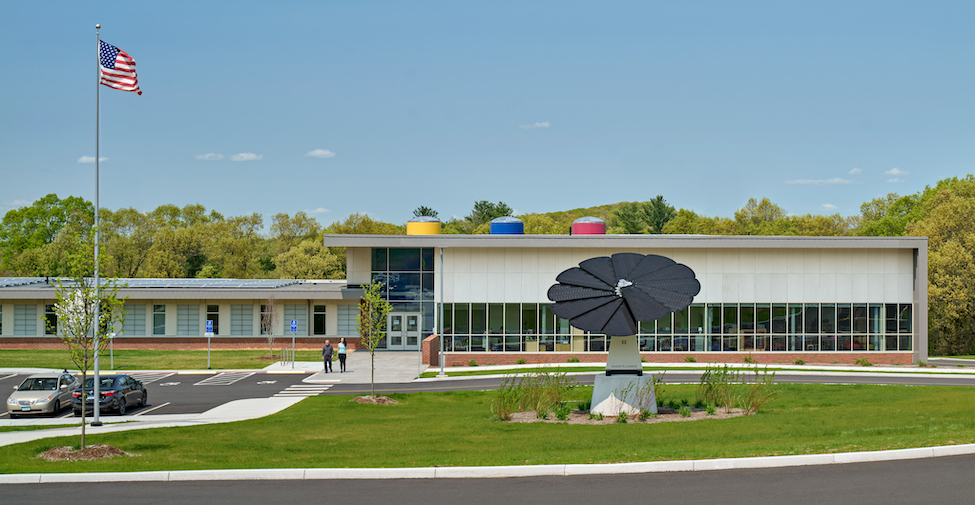Manchester, CT – With over a year of data tracked, Buckley Elementary School in Manchester has been officially verified by the New Building Institute (NBI) as the first Net Zero Energy Public School in New England. Designed by TSKP STUDIO, Buckley Elementary School opened in fall 2022.
The NBI defines a net zero building as having “metered data which shows net zero or positive energy generation over a given year.” Schools can contribute to a sustainable world through their operation, curriculum, and engagement with a broader community, setting the tone for environmental stewardship. Electing to renovate this 1940s school, rather than demolishing and starting from scratch, the project saved an estimated 75% of the embodied carbon compared to new construction. It used no operational carbon (zero fossil fuels).

Located in the main lobby, the energy dashboard is used as a teaching tool, displaying real-time energy output and usage of the school.
The building design maximized passive strategies, then determined how much energy the active systems like photovoltaics and geothermal needed to generate. The original 55,000sf building was gutted down to the framing, while a 9,000sf addition allowed space reconfiguration to meet 21st-century learning goals, including a STEM center with art and project labs. Students monitor and track energy consumption and production through an electronic dashboard in the school lobby.
The exterior walls were furred out with a combination of rigid, mineral wool and spray insulation to improve the R-value and eliminate thermal bridging. All windows were replaced with low U-value insulated glazing and polycarbonate sandwich panels, allowing for views and daylight while carefully balancing solar heat gain along the south elevation and mitigating heat loss along the north elevation.
Prominently featured at the main entrance is a Smart Flower that tracks the sun and teaches students the basics of solar energy, producing 4000-6000 kWh yearly. Other features include:
- 60 geothermal wells beneath the playfield
- 400 kW rooftop photovoltaics
- Efficient mechanical pumps with variable-speed motors and two-stage compressors
- Bipolar ionization technology for contaminant-free air
- An all-electric commercial kitchen
At completion, a whole-building blower door pressure test and a thermal scan validated the tightness of the construction. The school consumed 334,131kWh and produced 408,772kWh from January to December 2023.
















